aircraft
Latest

Airbus unveils an autonomous, modular flying car concept
Flying cars face many obstacles, but one of the biggest is accommodating all the parts needed to both drive and fly -- their designs amount to big, heavy compromises. Airbus and Italdesign want to try something different. They've just unveiled the Pop.Up, an autonomous concept that uses a modular passenger capsule to switch between four-wheeled ground transport and quadcopter flight. All you do is tell the vehicle's AI where to go -- it'll snap on air or ground modules based on both the available routes and your habits. Airbus even floats the possibility of shuttling your capsule through hyperloop tubes when they're available.
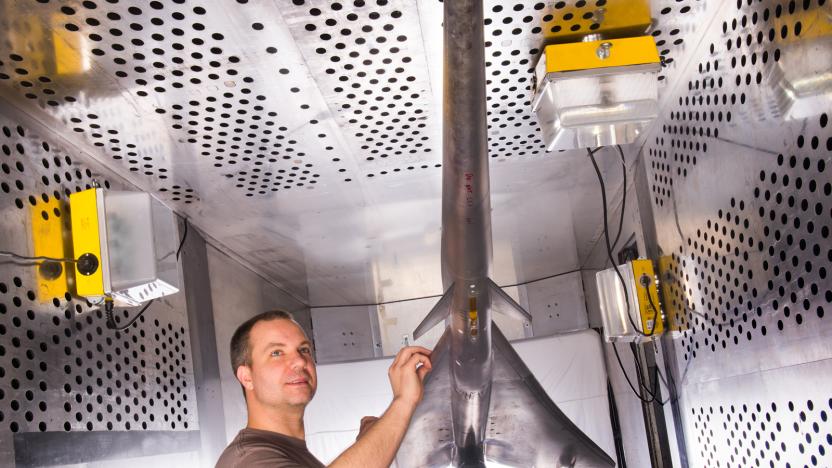
NASA starts wind tunnel tests for its quiet supersonic jet
NASA's plans for a quiet supersonic jet, the QueSST, just became tangible: the agency and Lockheed Martin have started wind tunnel tests for the future X-plane. It's a scale model at this stage, but it will be subjected to winds as high as Mach 1.6 (950MPH) to gauge both its aerodynamic performance as well as parts of its propulsion system. The tests should run until the middle of 2017.

Drone flies as both biplane and helicopter using one propeller
There are helicopter drones and fixed-wing drones, but creating a hybrid of both is tricky. Even Parrot's Swing, as clever as it is, needs four propellers and elaborate wings to pull off its stunt. However, TU Delft (with backing from Parrot) has a far more elegant solution. Its DelftAcopter drone doubles as both a fixed-wing aircraft and a helicopter using only one propeller -- its tailless biplane design lets it take off and hover vertically, but gracefully turn into a fast-moving airplane (up to 62MPH) at a moment's notice. It's an incredibly simple design that makes you wonder why someone hadn't considered it for drones before.
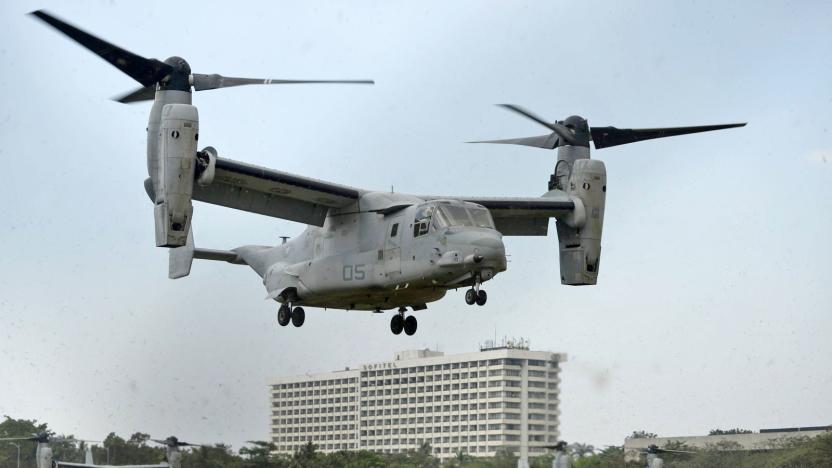
Uber explores offering short-hop flights across town
Uber has already resorted to more than one unusual method to get you from one side of town to another, but you haven't seen anything yet. The ridesharing outfit's Jeff Holden tells Recode that Uber is researching the use of VTOL (vertical takeoff and landing) aircraft for short-hop urban flights. It'd potentially speed up long trips, especially in areas where traffic jams might make a conventional ride excruciatingly slow. You could travel from San Francisco to Oakland in 9 minutes, Holden suggests.

Longest-ever aircraft takes damage in second flight
The future of air travel may have to wait a while. Airlander 10, Hybrid Air Vehicles' cross between an airplane and airship, suffered damage at the end of its second test flight. The longest-ever aircraft wrecked its cockpit when it nosedived on landing. HAV reports that the crew is "safe and well," thankfully, but it's not clear how long this will delay the Airlander program. The company tells the BBC that it's waiting on the results of a debriefing before it provides more details.

World's longest aircraft takes its first flight
That aircraft you see above may look more than a little odd, but it just made history... and it might be the future of flight. Hybrid Air Vehicles has successfully flown the Airlander 10, a long-endurance airplane/airship hybrid billed as the longest aircraft ever at 302ft end to end. It was just a short, minutes-long trip around the countryside in UK's Bedfordshire, but it showed that the massive (if more than a little posterior-like) design is airworthy.
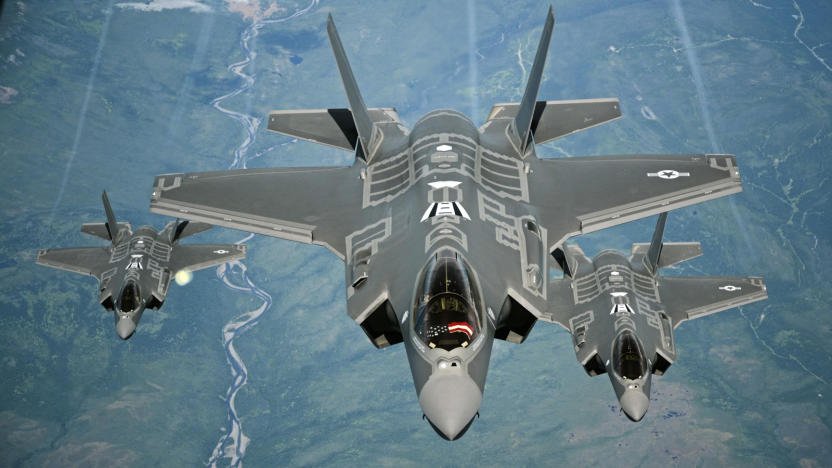
US Air Force says the F-35 is ready for combat
The F-35 Lightning II has faced more than a few technical problems and cost overruns in the 15 years since Lockheed Martin first won its production contract, but it's nearly done overcoming those hurdles. The US Air Force has declared that the F-35A (that is, the conventional takeoff model) is officially ready for combat. The first squadron to get the advanced jet, the 34th Fighter Squadron at Utah's Hill Air Force Base, can now deploy it on real-world missions if necessary.

China finishes building the world's largest amphibious plane
On November 2nd, 1947, the Hughes H-4 Hercules took off for the first time. The test run lasted less than a minute, and it traveled for around a mile. The H-4, erroneously nicknamed the Spruce Goose, was a behemoth; its wing 320-foot wingspan is still the largest of any plane to fly. But that flight was also to be its last; a proof of concept developed by Howard Hughes that was shelved shortly after the test. Now, China's state-owned aircraft maker AVIC has built an amphibious plane that fulfils Hughes' dream of a colossal sea-faring plane.
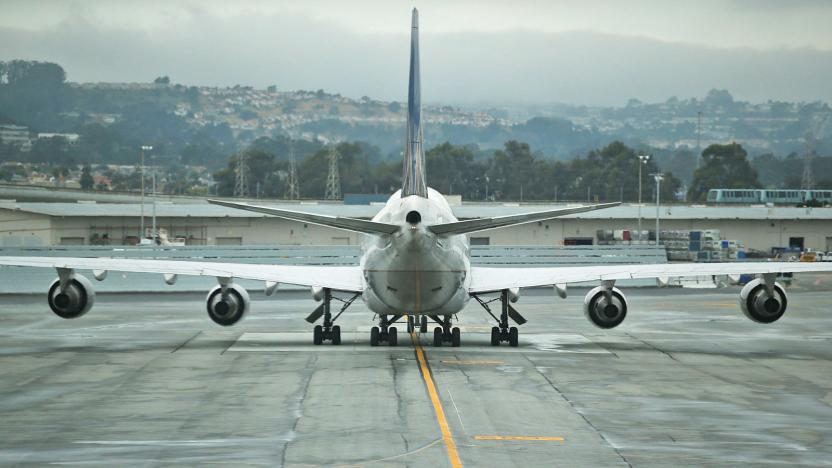
EPA findings should lead to caps on aircraft emissions
It's no secret that aircraft contribute to harmful emissions like road-going vehicles, and the Environmental Protection Agency is one step closer to keeping that pollution in check. It recently finalized findings showing that some aircraft produce air pollution that contributes directly to climate change. As a result, the EPA is now free to set standards for aircraft emissions that help the US honor the Clean Air Act and, ultimately, its commitment to the Paris climate change agreement. While the US is already backing an international standard, this gives it the chance to demand tougher (or at least, more America-specific) requirements.

Solar Impulse 2 starts the last leg of its round-the-world flight
It's all coming down to this. Well over a year after beginning its round-the-world trip, Solar Impulse 2 has embarked on the final leg of its journey. The solar-powered aircraft left Cairo early on the morning of July 24th and should reach its original starting point, Abu Dhabi, within 2 to 3 days. This certainly isn't the most arduous part of the adventure (the Pacific crossing was far more challenging). However, it'll likely be the one that everybody remembers -- it'll be the definitive proof that clean energy can be used to accomplish impressive feats.
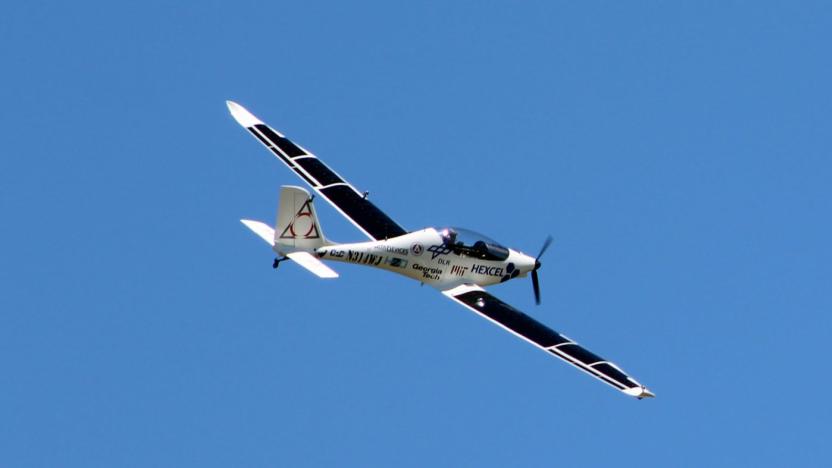
Solar aircraft test flight paves the way for internet drones
Solar Impulse 2 isn't the only Sun-powered aircraft reaching a milestone this week. Luminati Aerospace has conducted a public test flight of its prototype solar aircraft, the VO-Substrata, that represents a stepping stone toward drones that supply internet access. While this early design has a pilot, Luminati eventually wants to make pilotless vehicles that fly as high as 60,000 feet and never need to land. If all goes well, manufacturing starts soon as the end of 2016.

Passenger drone gets permission for US flight tests
Don't be surprised if you see a very large, very unusual drone flying through Nevada's skies. The state's Institute for Autonomous Systems has given China's EHang permission to test fly its passenger-toting 184 drone later this year. In addition to providing basic clearance, the move will also have the Institute create criteria that shows the airworthiness of the autonomous single-seater to the Federal Aviation Administration. It's not certain just where the 184 will fly, although it'll sometimes need restricted airspace. EHang won't just be flying in the empty desert, then.

Airbus drone is made almost entirely from 3D-printed parts
Airbus isn't content with 3D printing motorcycles -- it's crafting aircraft, too. The aviation giant used the recent Berlin Air Show to introduce Thor, a drone built almost exclusively from 3D-printed parts. Everything that isn't electrical is built from polyamide, whether it's the propellers or the landing gear. The result is a robotic aircraft that's both quick to make (there are no tools involved) and extremely light -- the entire 13-foot-long vehicle weighs a modest 46 pounds.
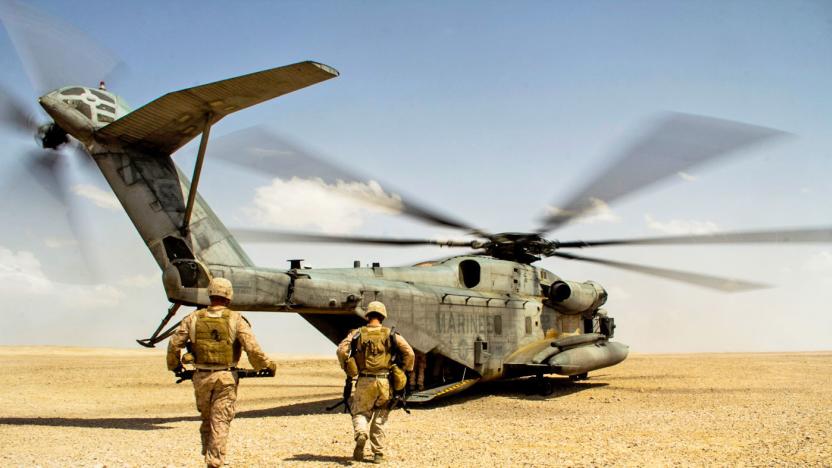
Software predicts the lifespans of machines by 'cloning' them
In some cases, machine breakdowns are more than just inconveniences -- in the military, they can spell disaster on the battlefield. Software is quickly eliminating those rude surprises, however. NASA spinoff Sentient Science has been offering DigitalClone, a software tool that predicts failures by 'cloning' parts. It uses an understanding of the physics of a given part, such as friction and wear, to determine when that gear is likely to break. The clone is uncannily accurate (Sentient Science has sensors to confirm its data), making it easy to extend the lifespan of a device by replacing parts before there's a crisis.

Solar Impulse 2 completes its flight across the Pacific
After months of delays and days of flying, Solar Impulse 2 has finished crossing the Pacific. The sunlight-powered aircraft arrived in San Francisco Bay on the night of April 23rd, with an expected touchdown at Moffett Field (as of this writing) around 3AM Eastern on the 24th. This isn't the toughest stint to date (that honor goes to the 5,061-mile trip from Japan to Hawaii), but it was no mean feat. Pilot Bertrand Piccard had to travel 2,717 miles between Hawaii and San Francisco, with only short naps allowed during the 3-day expedition.

Watch an 18-rotor electric helicopter take its first manned flight
E-Volo has been talking about the prospect of using many-rotor electric helicopters (aka multicopters) as semi-affordable personal transport for years, and it now looks like this isn't just a far-fetched dream. The company recently completed the first manned test flight of the first certified multicopter, the Volocopter VC200, and documented the whole affair on camera. It wasn't the most ambitious flight, as you'll see in the clips below, but it shows exactly what the extremely stable, drone-like vehicle can do. You don't need to constantly monitor the controls to keep the VC200 airborne, making it perfect for newcomers.
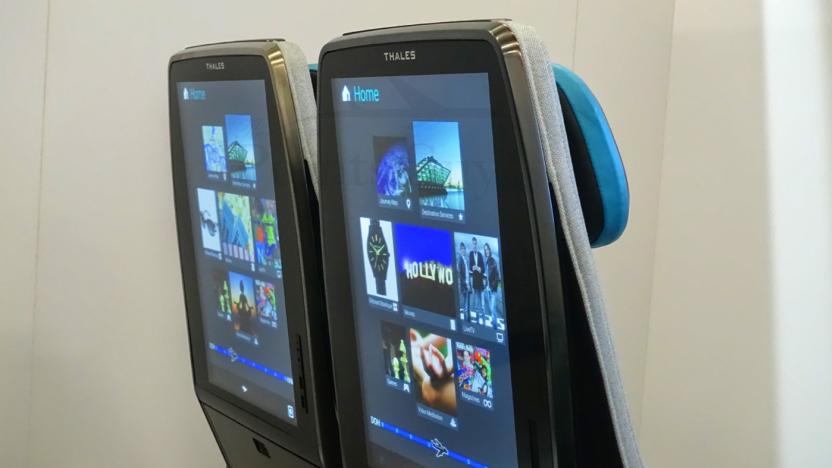
The future of air travel includes giant seatback displays
Airlines are increasingly embracing mobile devices for in-flight entertainment, and for a good reason -- a tablet is usually much nicer than the cramped, crude seatback systems you normally deal with. Thales thinks the industry can do better, though. It just previewed an in-flight entertainment system, Digital Sky, whose prototype gives each passenger a massive 21.3-inch touchscreen. The portrait orientation leads to some wasted space when you're watching videos, but it can do things that aren't realistic on tinier displays, like serving up the airline's magazine or highlighting things to do at your destination.

Lockheed Martin's hypersonic aircraft plans are taking shape
For years, Lockheed Martin has been working on hypersonic (Mach 5 and above) aircraft like the SR-72, which could reach virtually any part of the world within a couple of hours. These vehicles have long been seen as distant prospects (the SR-72 might not reach service until 2030 at the earliest), but they now appear to be coming together. Lockheed tells the press that it expects to fly a demonstrator hypersonic aircraft "the size of an F-22" at a cost of less than $1 billion. That's no mean feat when some conventional programs cost more, and it's a hint that hypersonic technology is becoming a practical reality.
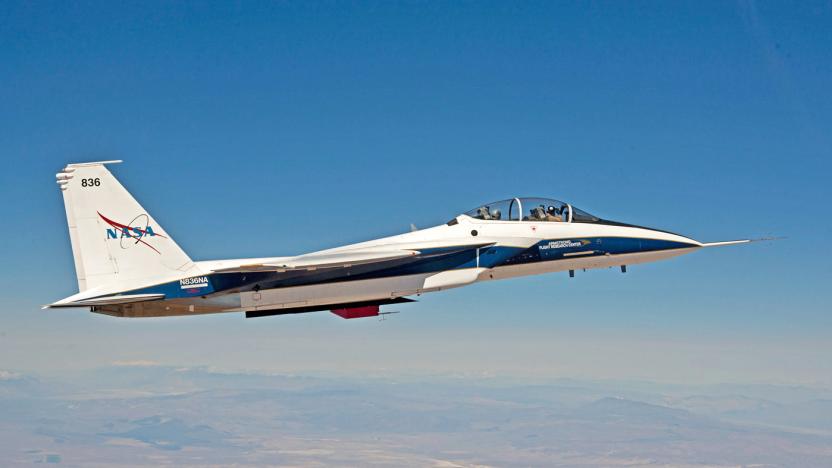
NASA probe should lead to quieter supersonic aircraft
There's a good reason why it still takes hours to fly cross-country: supersonic airplanes are still so noisy that it's utterly impractical to fly them over populated areas. That's why the Concorde was largely relegated to overseas flights, after all. However, NASA has a new sensor that could usher in an era of quieter supersonic aircraft. The Eagle Aero Probe (the device you see in the red housing above) measures air pressure changes right near where they occur during a sonic boom, giving a near-instantaneous sense of what's happening. Previously, the sensors were about 15 feet away in the radar dome -- not exactly helpful when you need real-time data to measure a shockwave.

DARPA unveils its next VTOL aircraft concept
DARPA announced on Thursday that it had awarded the Phase 2 design contract for its unmanned VTOL X-Plane concept to Aurora Flight Sciences (AFS). VTOL (Vertical Take-Off and Landing) planes, like the current generation of V-22 Osprey or F-35B Lightning II, have to trade off between a number of mission requirements including flight speed versus range or fuel efficiency versus power. With the X-Plane, DARPA hopes to have it all and make this VTOL platform more functional on the battlefield.


